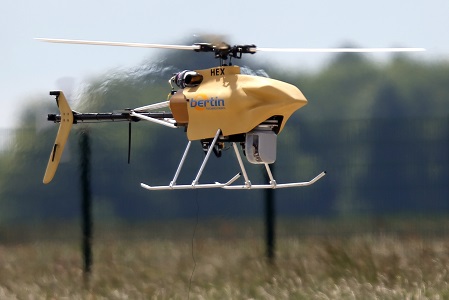
Drones or the aerial vehicle will soon aid farmers to monitor the growth of their crops and also determine if they are in need of pesticide application.
Dennis Bowman, a crop researcher at the University of Illinois, is experimenting with two drones, a remote-controlled Phantom quadcopter and a Parrot AR Drone with GPS to take aerial images of crops that are growing in the university's farm research areas and find out which areas need attention.
"As the crop gets up and going, we will fly over it. We are also looking at doing some scans over our herbicide studies to see if the drone photography can help us identify where crops are stressed by postemergence herbicide applications," the Hindu quoted Dennis Bowman, a crop science educator with University of Illinois.
Each of the drones can make flights of 10 to 15 minutes using rechargeable lithium polymer batteries. The computer used in drone is similar to the ones used in smartphones.
While conducting the research, Bowman purposefully made errors in fertilizer application in order to check if drones could identify the error before people on the ground manually finds it. This technique will allow researchers to determine which areas need replanting or adding of fertilizers in order to increase the crop.
The aim is also to monitor the affect of herbicides that are applied after detecting a pest outbreak.
Usually farmers hire "crop scouts" that walk through corn fields and other plants to monitor their condition. However, the researcher added that it was not a pleasant task. "The odds of actually getting to the far end of that field on foot to see what's going on are pretty slim. To get a bird's-eye view of your crop, the drones offer a handy way to do it." he added.
"Standard pictures and video can tell us a lot. It probably isn't going to tell us what the problem is, but it will tell us where problems are so that we can target our scouting in those specific areas and determine what might be occurring." Wired quoted Bowman.
Bowman uses a Canon Powershot SX260 with an advanced lens that can perform infrared photography. One added advantage of the drone is that it can identify one specific problem - the spread of invasive and herbicide-resistant weed Palmer amaranth. The weeds provide a different spectrum response from crops like soybeans and so can be easily identified from above.
However, the US Federal Aviation Administration has prohibited the commercial use of unmanned aerial vehicles, but is currently under increase pressure to allow for the use of drones.
If FAA updates its rule, Bowman expects that "in the future a farmer will get up in the morning, hit a button and launch a couple of drones that fly out over his farms and collect imagery that's sent wirelessly to his office".








